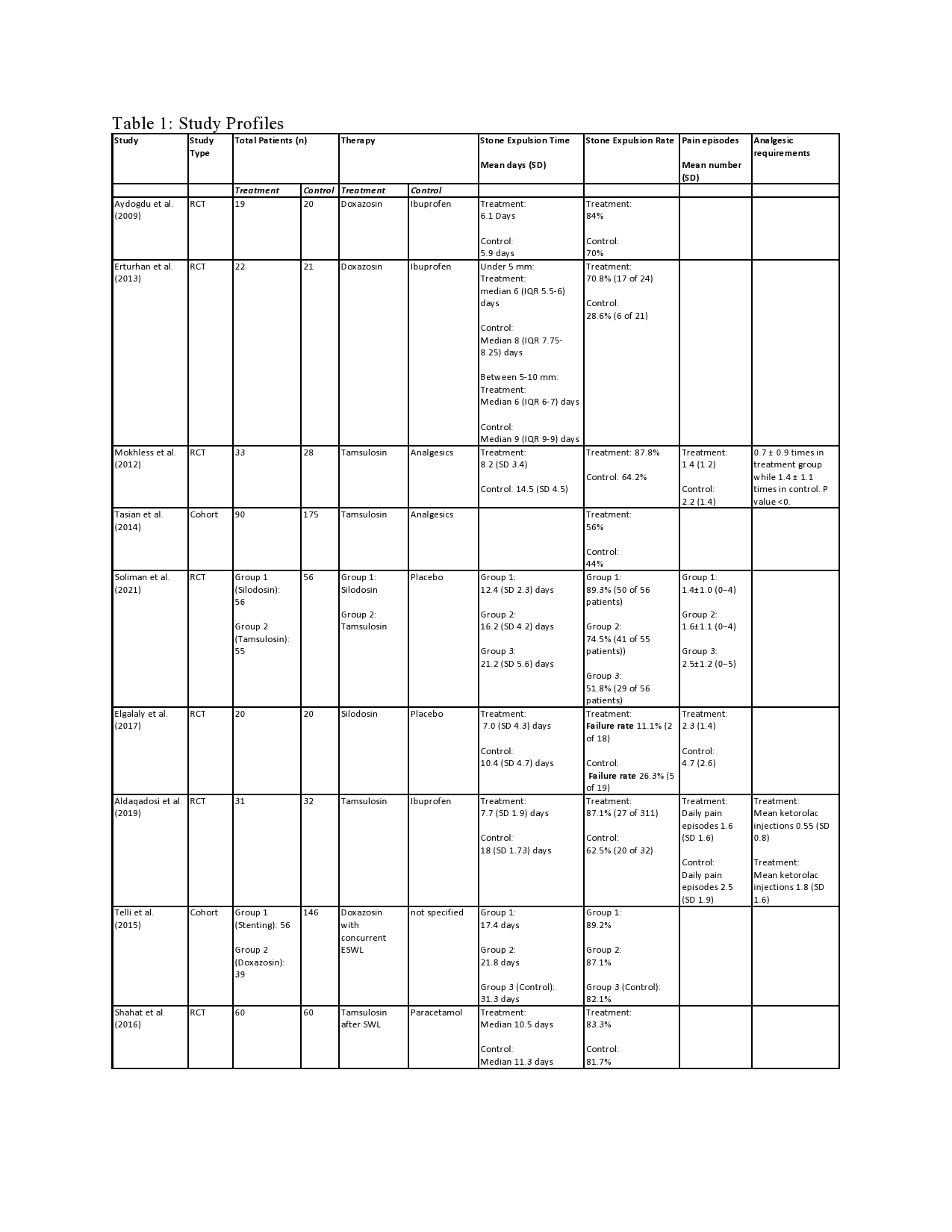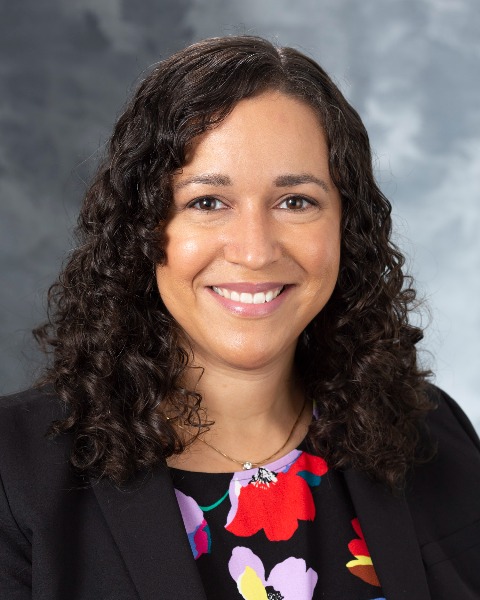Back
Introduction: Urolithiasis is increasingly common in children, and alpha-adrenergic antagonists are often used as a treatment option. We conducted a systematic review of randomized controlled trials and cohort studies to assess the use of alpha-adrenergic antagonists in the treatment of kidney stones in pediatric patients.
Methods: A search of MEDLINE, PubMed, Cochrane, EMBASE, and Google Scholar was conducted on May 20, 2022. Inclusion criteria included patients <18 years old with any kidney stones treated with alpha-adrenergic antagonists reported in cohort studies and randomized control trials. Outcomes included stone expulsion time, stone passage rate, mean number of pain episodes, and mean need for analgesics. Following deduplication, two reviewers screened the articles with a third reviewer available for adjudication. We performed data extraction of the selected articles, and the results were assimilated and synthesized qualitatively.
Results: Nine studies were selected out of 254 articles and 1,039 patients were included, outlined in Table 1. Five of 6 studies measuring stone expulsion time reported a statistically significant decrease in expulsion time in the treatment group compared to the control. Seven studies measured the stone expulsion rate, and 5 reported a statistically significant increased expulsion rate in the treatment group. In assessment of pain, four studies reported a decrease in the mean number of pain episodes in the treatment group and two studies showed a decreased analgesic requirement for treatment compared to control. Two studies assessed the use of alpha-adrenergic antagonists after shock wave lithotripsy, and both found alpha-adrenergic not superior to watchful waiting for spontaneous stone passage.
Conclusions: Our results suggest that alpha-adrenergic antagonists are effective at decreasing the stone expulsion time and increasing the stone passage rate. Limitations included variable reporting of intervention and outcome data. We conclude that alpha-adrenergic antagonists are a useful adjunct therapy to consider in the treatment of pediatric nephrolithiasis. SOURCE OF
Funding: None

Moderated Poster Session
Session: MP10: Stone Disease: Medical & Dietary Therapy
MP10-19: The use of alpha-adrenergic antagonists in pediatric nephrolithiasis: a systematic review
Friday, April 28, 2023
9:30 AM – 11:30 AM CST
Location: S405

Shannon Cannon, MD (she/her/hers)
University of Wisconsin
Poster Presenter(s)
Introduction: Urolithiasis is increasingly common in children, and alpha-adrenergic antagonists are often used as a treatment option. We conducted a systematic review of randomized controlled trials and cohort studies to assess the use of alpha-adrenergic antagonists in the treatment of kidney stones in pediatric patients.
Methods: A search of MEDLINE, PubMed, Cochrane, EMBASE, and Google Scholar was conducted on May 20, 2022. Inclusion criteria included patients <18 years old with any kidney stones treated with alpha-adrenergic antagonists reported in cohort studies and randomized control trials. Outcomes included stone expulsion time, stone passage rate, mean number of pain episodes, and mean need for analgesics. Following deduplication, two reviewers screened the articles with a third reviewer available for adjudication. We performed data extraction of the selected articles, and the results were assimilated and synthesized qualitatively.
Results: Nine studies were selected out of 254 articles and 1,039 patients were included, outlined in Table 1. Five of 6 studies measuring stone expulsion time reported a statistically significant decrease in expulsion time in the treatment group compared to the control. Seven studies measured the stone expulsion rate, and 5 reported a statistically significant increased expulsion rate in the treatment group. In assessment of pain, four studies reported a decrease in the mean number of pain episodes in the treatment group and two studies showed a decreased analgesic requirement for treatment compared to control. Two studies assessed the use of alpha-adrenergic antagonists after shock wave lithotripsy, and both found alpha-adrenergic not superior to watchful waiting for spontaneous stone passage.
Conclusions: Our results suggest that alpha-adrenergic antagonists are effective at decreasing the stone expulsion time and increasing the stone passage rate. Limitations included variable reporting of intervention and outcome data. We conclude that alpha-adrenergic antagonists are a useful adjunct therapy to consider in the treatment of pediatric nephrolithiasis. SOURCE OF
Funding: None

